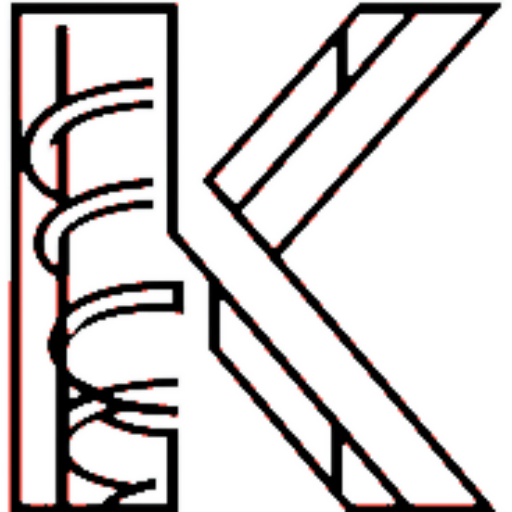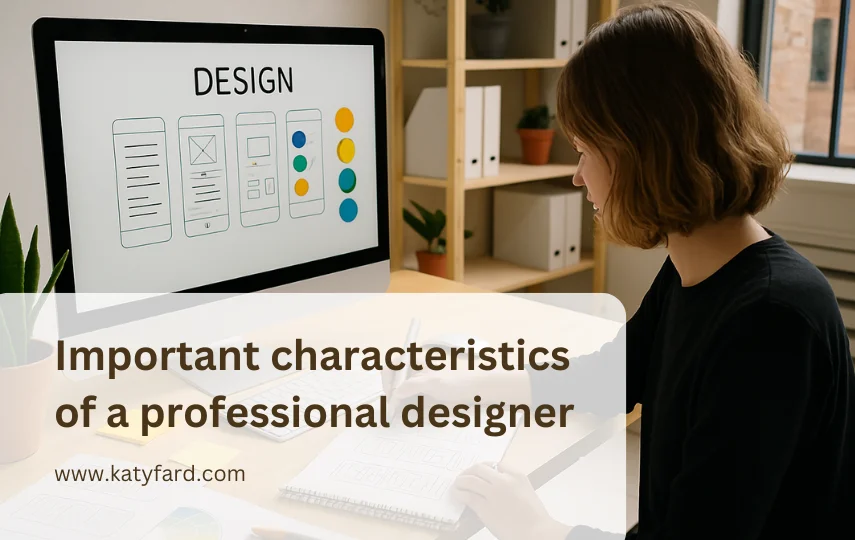In today’s world, design is not only a tool for beautifying products and services, but also one of the main components of the success of any business. Users encounter design at first glance; from website design to product packaging or the user interface of an application. This first glance can determine whether the audience stays or leaves.
With this in mind, choosing a good designer is no longer just a simple decision, but one of the most strategic decisions that can be made. In this article, we will try to comprehensively and deeply examine the characteristics of a professional designer and provide ways to recognize a good designer.
A professional designer is not just a graphic designer
Many people confuse design with just “beautifying”. But in fact, professional design is a combination of problem solving, a deep understanding of user experience, color psychology, knowledge of tools and business understanding. A professional designer first asks: “What problem should this design solve?” And then, it puts beauty in service of the goal, not just for the sake of beauty.
Problem-based design
One of the most important differences between an amateur designer and a professional designer is the way they approach the project. An amateur designer often focuses on appearance: colors, effects, fonts, and composition. But a professional designer sees the project as a problem from the beginning. He analyzes what message the design is supposed to convey, what its purpose is, who the audience is, and in what context it will be used.
For example, designing a shopping website is very different from a news website. A professional designer understands this difference and offers a tailored solution.
Key characteristics of a professional designer
1. Creativity within a framework
Creativity without a goal is like poetry without meaning. A professional designer must be creative, but this creativity must serve the purpose of the project. He can use new visual elements, but always remains true to the user, his experience, and the main message.
2. Understanding User Experience (UX)
One of the most important skills of a professional designer is a deep understanding of user experience. He knows how users interact with the design and how to shape the design in such a way that the user can easily, quickly, and with complete satisfaction achieves his goal.
3. Ability to use design tools
Familiarity and mastery of tools such as Adobe Illustrator, Photoshop, Figma, XD, Sketch, InDesign, and other software are essential for professional designers. But more important than knowing the tools is using them purposefully. A professional designer knows which tool to use for each project and how to take advantage of its capabilities.
4. Analytical perspective
Analyzing information, data, and audience needs is another distinguishing feature of a professional designer. He can make better design decisions by analyzing statistics, reports, user behavior, and other data.
5. Ability to communicate effectively
A strong relationship with the client and the project team is one of the characteristics of a professional designer. He knows how to translate the client’s requirements into the language of design, as well as how to present and defend his design.
6. Responsibility and time management
Design projects usually have specific deadlines. A professional designer delivers the project on time with planning, scheduling, and responsibility, and interacts effectively with the team throughout the design process.
7. Flexibility to feedback
No design is perfect the first time. A professional designer listens to constructive feedback, analyzes it, and applies it to the design if it makes sense. He seeks to improve the design, not blindly defend it.
8. Staying up to date with trends
The world of design is changing rapidly. Every year, new trends enter the world of graphics and UI/UX design. A professional designer is always learning and aware of the latest global trends, but at the same time, he does not follow the trend blindly.
9. Business perspective on the project
A successful design is one that helps the business grow. A professional designer has a good understanding of revenue models, branding, marketing, and market needs. He sees design in line with commercial success.
10. Documentation and organization in the project
A professional designer documents projects well: systematic naming of files, specific folders, different versions of the design, and explanations for the developer or client.
How to distinguish a professional designer from others?
Portfolio review
Portfolios or examples are the first step in identifying a professional designer. Designs in which only an attractive appearance is seen are not enough. Consider these points:
- Are the projects varied?
- Is there a clear explanation of the design goal and process for each project?
- Are the designs up-to-date and of high quality?
Ask about the design process
A professional designer usually has a clear process through which they move a project forward:
- Initial research and understanding of client needs
- Wireframe and preliminary design
- Get feedback
- Implement final design
- Test and deliver
If the designer had no process or went straight to the output, they are probably not professional.
How they answer questions
The way the designer answers your questions reveals a lot. If they explain with interest, detail, and clarity why they used a particular color or combination, it shows that they understand the principles of design.
Transparency in timing and pricing
A professional designer is transparent: they specify the delivery time, number of revisions, exact cost, and payment procedures from the beginning. If someone just offers a low price and doesn’t have a plan to execute, you’ll probably run into trouble.
Request a Contract or Agreement
Even if your project is small, a professional designer will always start with a contract or at least a simple agreement to reduce future misunderstandings.
What questions should we ask the designer?
- Do you have experience designing for our business?
- How do you understand user needs?
- What tools do you use?
- What process do you recommend for this project?
- How familiar are you with user experience (UX) concepts?
- How did you manage your past projects?
- What is your process for making changes if they need to be made?
The answers to these questions can give you a clear picture of how the designer works.
Signs of an amateur or unprofessional designer
- Overuse of ready-made elements and templates
- No clear and documented portfolio
- Poor and unplanned responsiveness
- Not paying attention to the real needs of the audience
- Inability to explain and defend the design
- Disorganization in presenting files and lack of documentation
- Inability to manage time and deliver on time
A good designer must listen to you
One of the key characteristics of a professional designer is the ability to listen. He must listen carefully to what you want, what is important to you, what your goals are, and who your audience is. Effective design is the result of effective dialogue.
A good designer is your partner in success
The best designers are those who do not just see the client, but see the project as their own. They are looking for your growth, not just to receive the project fee. For this reason, you should look for such people.
Conclusion
Finding a good designer may seem complicated at first, but by understanding the characteristics of a professional designer, reviewing their portfolio, asking the right questions, and evaluating their approach and communication, you can make a more confident choice.
Finally, remember that good design is not just an expense; it’s an investment that can grow your brand, increase your sales, and elevate your user experience. So be meticulous and don’t rush into choosing a designer.


Katyyy hi!
Could you please tell me Why is it important for a designer to understand the context and purpose of a project before starting the design process?
Hi Abdul,
Because context defines audience, goals, and limitations. Without it, the design may look good but fail to solve the real problem. A clear understanding ensures the outcome is not just beautiful—but also effective and aligned with the project’s purpose.
Thank you
Hey Katy, What methods can designers use to better understand and analyze user behavior?
Hello May,
To understand users, I study how they click, scroll, and interact with my site. Tools like heatmaps show hotspots, while surveys reveal frustrations. Testing different layouts (A/B testing) helps pick what works best. Watching real users navigate gives the clearest insights for improvements.
Thank you.
What are some common communication challenges between designers and clients, and how can they be resolved?
Hello May,
Misaligned expectations and vague feedback create friction. Establish clear project briefs, use visual references, and implement structured review cycles. Encourage clients to provide specific examples rather than subjective preferences to streamline the creative process and reduce revisions.
Thank you
Katy
What methods or tools can professional designers use to better understand the user’s needs during the problem analysis phase?
Hello Alejandro,
Designers can use user interviews, empathy maps, user journey mapping, and surveys. Tools like personas, design thinking workshops, and usability tests also help. These methods allow them to deeply understand the user’s context, goals, and pain points before proposing solutions.
Thank you